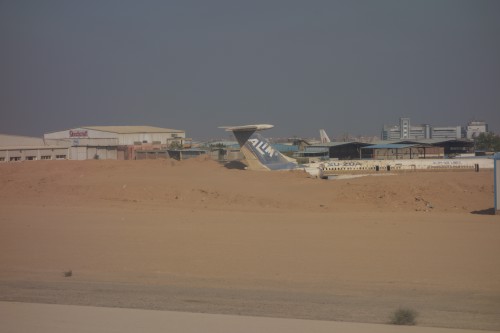
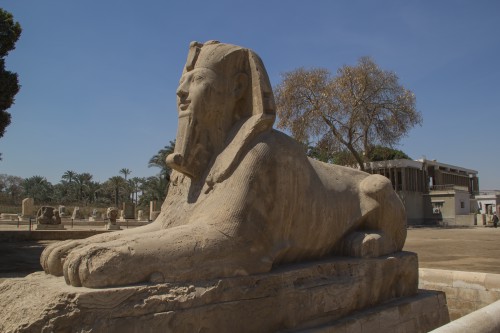
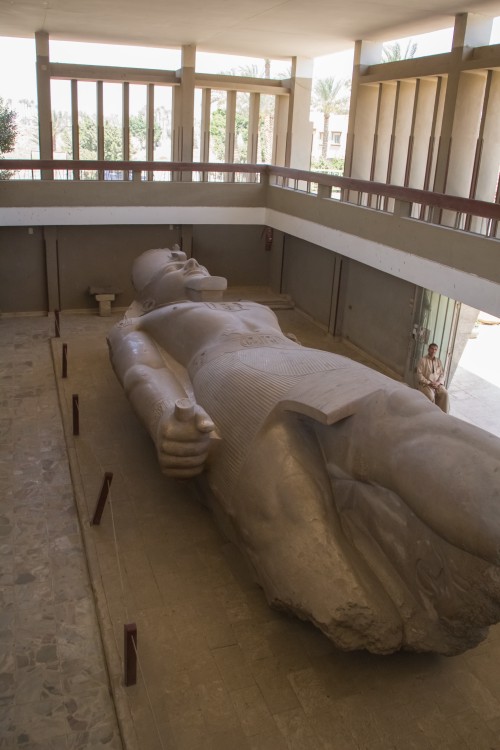
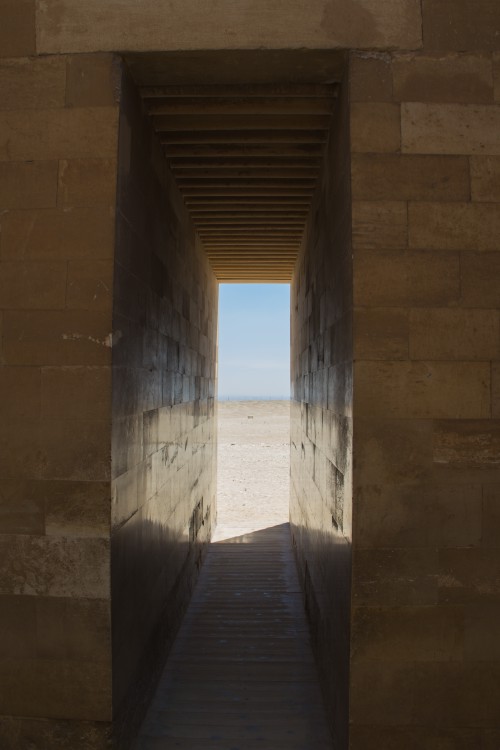
The alarm went off at 4:45, and we were not remotely ready to wake up. We got up and meandered around like zombies to get ready and finish packing. At breakfast, no one else was there, making us wonder if we would be the only people from the boat on the early flight. Shortly before we finished up, a large group came in, so we surmised they'd be on our flight, and simply were getting a later start. The drive to the airport was uneventful, but there were a surprisingly large number of people out so early. Ayman, who accompanied us to the airport, told us that today was a special day in Egypt, the last day of spring. We asked if the day was always April 21, and Ayman said "no, it's always the same day." We didn't understand this, but our best guess is that maybe it's always the day after Easter, or is the "same day" based on a lunar calendar. At the airport, Ayman was able to get our bags checked through to Istanbul, so we wouldn't have to mess with bags on either arrival or departure in Cairo. But there was no way to print our boarding passes for the flight to Istanbul (since it was on a different airline), so we'd at least have to check in at the Turkish airlines desk in the evening. While waiting at the check-in desk, the world's loudest children came by, and talked at such a high decibel level we thought there must have been something genetically wrong with them. We hoped they would not be joining us on the plane.
 |
 |
 |
 |
They did, but it was no matter. Crystal fell asleep, and Justin read, and the flight was over in no time. After landing in Cairo, we saw Ahmed again, and he was happy to hear that we wouldn't need to grab any bags. From landing to being in our car was about five minutes, and it still wasn't even 9am yet. Since today was a holiday (either the one mentioned by Ayman, or Easter, or something else), there was very little traffic. We drove over to Giza yet again, but this time in about half the time, then turned south and went to Memphis. When we were almost to Memphis, we stopped at a roadblock, and next thing we knew, we had a full-on armed police escort, with a truck in front of us and a truck behind us, with armed guards in each. Sherif told us we were either really important and/or the police were really bored. We assumed the former. At Memphis we saw a giant statue of Ramesses II (lying flat on its back, as it fell in an earthquake) and a giant Sphinx that was likely of Hatshepsut. It resembles a female much more than a male, so that is why it is "likely" of Hatshepsut.
 |
 |
From Memphis we went to Saqqara, which has a step pyramid (the pyramid of Djoser) that is even older than the Pyramids in Giza. That and the other pyramids weren't particularly impressive (although, to be fair, they were 5000 years old); what was impressive, however, was the funerary complex, which after almost 5000 years had stone walls that looked impeccable (we still don't believe that these haven't been refurbished). There was also a very deep pit where they had buried the tomb of the Pharoah. The pit was dug through the bedrock, which was quite a feat with no metal tools. Sherif asked us if we had any ideas how they lowered the sarcophogus, to which Justin replied "filled it with sand, put in the tomb, gradually dug out the sand?" That was mostly correct, with the caveat being that instead of just digging out the sand with a shovel, they brought it up a stairwell and then dropped it back on top, which lowered the tomb and then eventually buried it as well. Sherif brought up the comment Justin made the other day about finishing the granite pillars on-site in the Valley Temple, so it must have made quite an impression. Crystal purchased a sphinx made out of alabaster (limestone that has hardened under pressure over time) on the way out to the van.
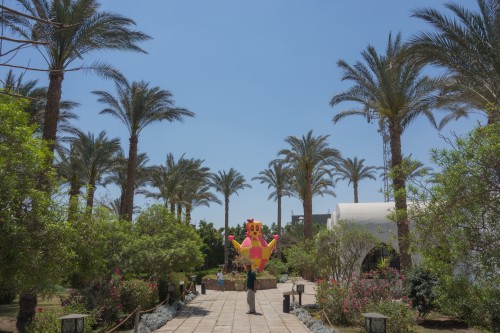 |
 |
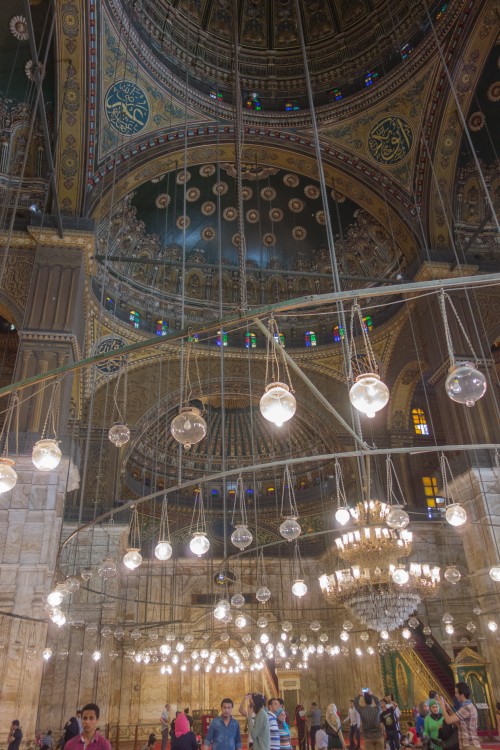 |
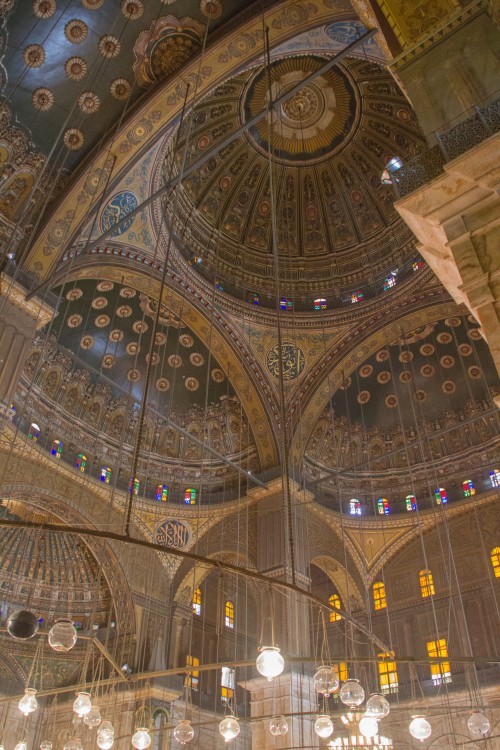 |
 |
From Saqqara, we ate lunch nearby at the Saqqara Palm Resort, which was chock full of people for the holiday. It really resembled a Vegas hotel pool, except for most of the women being covered. But there was house music blaring, kids jumping in the pool, nowhere to sit, etc. We went into the restaurant, and had a very good lunch with Sherif. He told us about his kids and the education system in Egypt. From lunch, we went to the Islamic center of Cairo, which we had missed the previous Thursday. Our first stop was the Citadel and Muhammad Ali Mosque. We had no idea that the boxer Muhammad Ali was not the first famous person to have that name. Muhammad Ali is generally regarded as the founder of modern Egypt. In the late 1700s and early 1800s he established the dynasty that ruled Egypt until the revolution of 1952. The mosque that bears his name was built between 1830 and 1848 AD, and has a number of inner domes as high as 70 feet and outer domes that are as tall as 135 feet. The inside of the domes are extremely decorative, with lots of colors and intricate designs. From outside, we could get sweeping views all around the city, which is the whole reason the Citadel was built there - for protection and safety. Although it was quite hazy, we could make out a couple of the Giza pyramids from the Citadel.
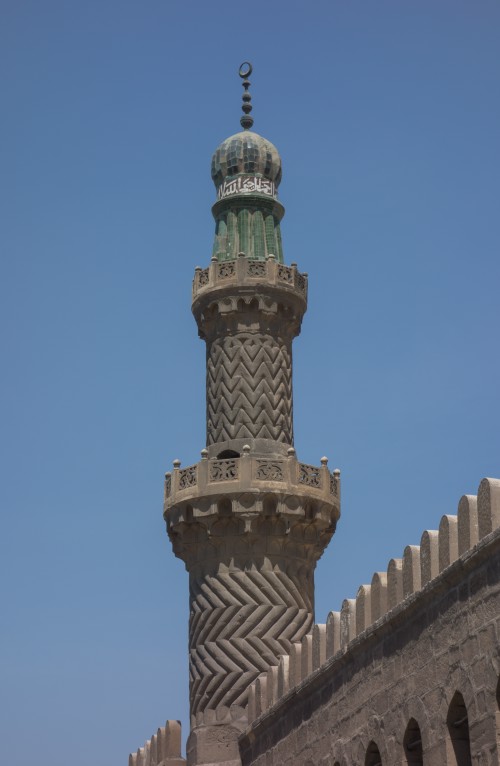 |
 |
 |
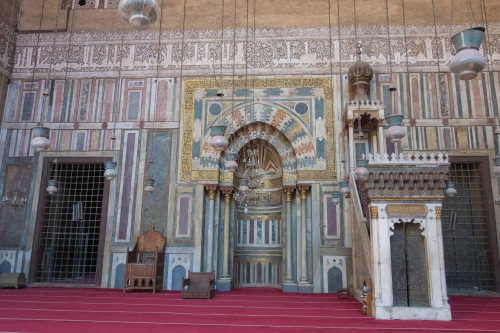 |
It was a short walk from the Citadel to Sultan Hassan Mosque - it was literally across the street, just outside the Citadel. It is an older building, built around 1350. It was not near as big, but still very ornate. We were also blessed with the opportunity to hear one of the caretakers show off the acoustics inside one of the buildings, singing something akin to a prayer call (but not at prayer call time). We saw other people taking video, so we got video of the last 1/3 or so of the performance, and the video does not do it justice. In person, it was breathtaking, and one of the highlights of the trip. From Sultan Hassan Mosque, we walked nearby to Al Rifa'i Mosque. Egypt's last king, King Farouq is buried there, as well as the last Shah of Iran. There was almost no one inside, and Sherif educated us about Islam, including its five pillars - that there is only a single God, and Muhammad is his messenger, to have a ritual prayer five times a day, to give 2.5% of one's savings to the poor and needy, the fasting period of Ramadan, and the pilgrammage to Mecca if one is able.
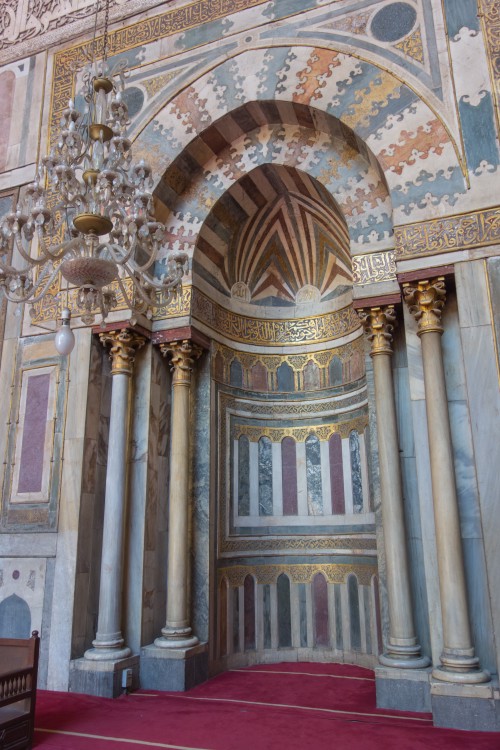 |
 |
 |
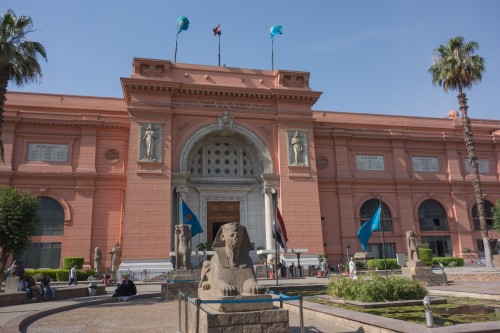 |
After finishing viewing the mosques, we drove into "downtown" Cairo, to go to the Egyptian museum. Being right next to Tahrir Square, there were tanks and barbed wire everywhere. Just to the west of the museum was the charred remains of the party building for ex-President Mubarak, who was kicked out as President in 2011. Apparently there has been no effort to either demolish and/or rebuild the building since then. The Egyptian museum has a no camera policy, so we checked in our various cameras, but Crystal forgot that she had one camera at the bottom of her purse, which led to an awkward/embarrassing moment when we went through security. We didn't get in any trouble, though. Since it was already late in the afternoon, we got a super fast tour at the museum. Several people went to the museum before getting on the boat cruise, but we thought it was better to go to the museum after having seen all the sights. We saw a number of items from King Tut's Valley of the Kings Temple, and that was particularly better to have seen after the fact, since we had already seen the temple that everything came out of. On the way out of the museum, we saw two guys talking very animatedly towards one another, with their voices rising. We asked if they were about to fight, and Sherif said "They aren't fighting," that's just how people talk in Egypt. But then they started punching each other and wrestling, and Sherif and a couple other folks went to intervene. Sherif came back and said "Okay, they were fighting." Walking back to the car from the museum, we walked down a short pedestrian walkway that was full of tanks. Sherif indicated the tanks were there since it wasn't a road for cars, so it was an easy place to put them for a show of force without getting in the way. We asked if would be a bad idea to take pictures, and Sherif agreed. But when we close to the car, Sherif said (very loudly) "Hey Justin, why don't you take a picture of me and Crystal." So Justin did, and lo and behold, some tanks ended up in the shot as well. Go figure.
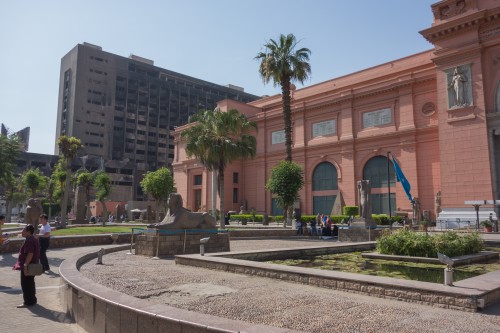 |
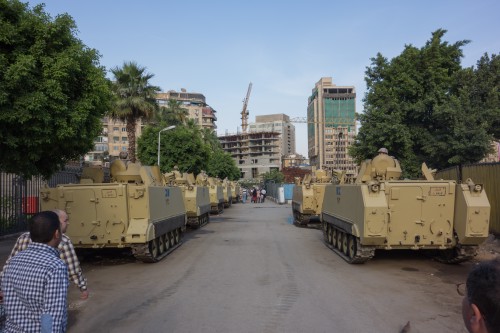 |
 |
From the museum, we drove back towards the airport. Around Heliopolis, we stopped to drop off Sherif, and got some sugarcane juice. It was good, and had a flavor we couldn't quite place. We might get it again, but then again, fermented sugarcane juice (aka "rum") is pretty good in its own right. Ahmed indicated to us that there is now a subway that didn't used to exist, and that because of that, traffic is "better." We shudder to think what it was like before. At the airport, Ahmed checked on our bags and ensured they were accounted for. After going through security and immigration (both pretty light), we ate at Hippopotamus Grill and got our picture taken with a giant stuffed hippo doll. We fell asleep almost immediately on the plane, and slept almost the entire way to Istanbul. After landing, we got through immigration quickly since we already had our visa, and our bags were almost the first off the carousel.
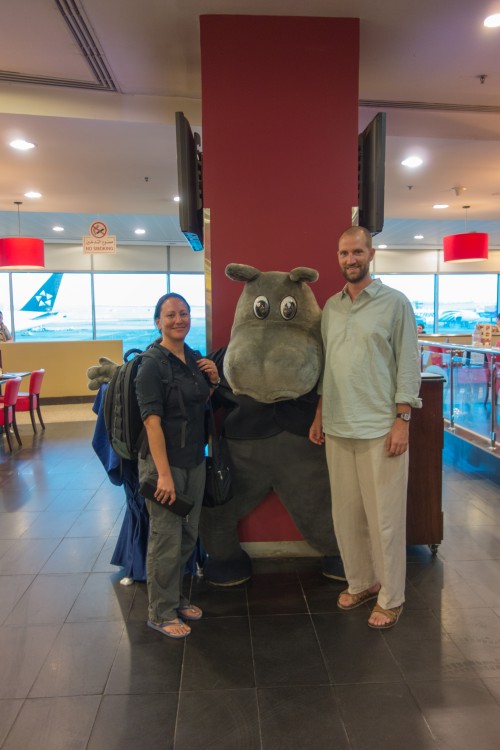 |
 |
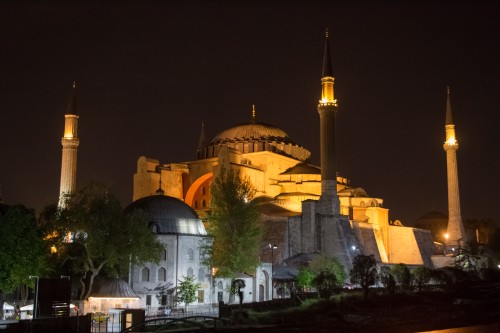 |
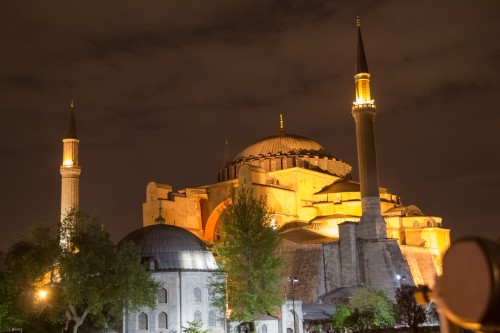 |
We met our guide Ezel, who was not expecting to see us so soon. Apparently our plane landed early as well, so we were actually lucky there was anyone to greet us. The drive across town was very short because of the late hour. We were at our hotel roughly one hour from landing, which Ezel said had to be some sort of record. After checking in, we went up on the rooftop terrace to enjoy the view of Hagia Sophia and the Blue Mosque - our hotel was right between them. Once again we had quite the full day, not enough sleep, but wouldn't have had it any other way.